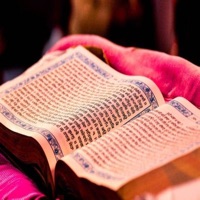
Shri Guru Granth Sahib Ji Bani funktioniert nicht
Hast du auch Probleme? Wählen Sie unten die Probleme aus, die Sie haben, und helfen Sie uns, Feedback zur App zu geben.
Habe ein probleme mit Shri Guru Granth Sahib Ji Bani? Probleme melden
Häufige Probleme mit der Shri Guru Granth Sahib Ji Bani app und wie man sie behebt.
Vollständige Anleitung zur Fehlerbehebung der Shri Guru Granth Sahib Ji Bani app auf iOS- und Android-Geräten. Lösen Sie alle Probleme, Fehler, Verbindungsprobleme, Installationsprobleme und Abstürze der Shri Guru Granth Sahib Ji Bani app.
Inhaltsverzeichnis:
- Shri Guru Granth Sahib Ji Bani iPhone Probleme und Lösungen
- Shri Guru Granth Sahib Ji Bani iOS App stürzt ab, funktioniert nicht, Fehler
- Netzwerkprobleme der Shri Guru Granth Sahib Ji Bani iOS-App
- Shri Guru Granth Sahib Ji Bani auf iOS hat einen schwarz/weißen Bildschirm
- Shri Guru Granth Sahib Ji Bani Android App Probleme und Lösungen
Wir verstehen, dass einige Probleme einfach zu schwierig sind, um sie durch Online-Tutorials und Selbsthilfe zu lösen. Aus diesem Grund haben wir es einfach gemacht, mit dem Support-Team von Mohit Agarwal, den Entwicklern von Shri Guru Granth Sahib Ji Bani in Kontakt zu treten..
56.67% Kontaktübereinstimmung
Developer: Sukhpreet Singh
E-Mail: care.happyinfotech@gmail.com
Website: 🌍 Guru Granth Sahib Website besuchen
Guru Granth Sahib (Punjabi (Gurmukhi): (Gurū Gra°th Sāhib Jī), Punjabi pronunciation: [ɡʊɾu ɡɾənt sɑhɪb], /ɡʊəru ɡrʌnt səhɪb/) is the central religious scripture of Sikhism, regarded by Sikhs as the final, sovereign and eternal living Guru following the lineage of the ten human Gurus of the religion, of whom six contributed the bulk. Guru Gobind Singh, the tenth Sikh Guru, did not add any of his own hymns; however, he added all 115 hymns of Guru Tegh Bahadur, the ninth Sikh Guru, to the Adi Granth and affirmed the text as his successor. The Guru Granth Sahib is written in the Gurmukhī script, in various languages, including Lahnda (Western Punjabi), Braj Bhasha, Khariboli, Sanskrit, Sindhi, and Persian. Guru Granth Sahib was composed predominantly by six Sikh Gurus: Guru Nanak, Guru Angad, Guru Amar Das, Guru Ram Das, Guru Arjan, and Guru Teg Bahadur. The Adi Granth, the first rendition, was compiled by the fifth Sikh Guru, Guru Arjan (1563–1606). The vision in the Guru Granth Sahib is of a society based on divine justice without oppression of any kind. This second rendition became known as Guru Granth Sahib. After Guru Gobind Singh died, Baba Deep Singh and Bhai Mani Singh prepared many copies of the work for distribution. The bulk of the scripture is divided into thirty-one rāgas, with each Granth rāga subdivided according to length and author. While the Granth acknowledges and respects the scriptures of Hinduism and Islam, it does not imply a moral reconciliation with either of these religions. The text consists of 1430 angs (pages) and 6,000 śabads (line compositions), which are poetically rendered and set to a rhythmic ancient north Indian classical form of music. It also contains the traditions and teachings of fourteen Hindu Bhakti movement sants (saints), such as Ramananda, Kabir and Namdev among others, and one Muslim Sufi saint: Sheikh Farid. It is installed in a Sikh gurdwara (temple); all Sikhs bow or prostrate before it on entering such a temple. The hymns in the scripture are arranged primarily by the rāgas in which they are read. Copies in these languages often have the generic title of Sant Bhasha. The Granth is revered as eternal gurbānī and the spiritual authority in Sikhism.









